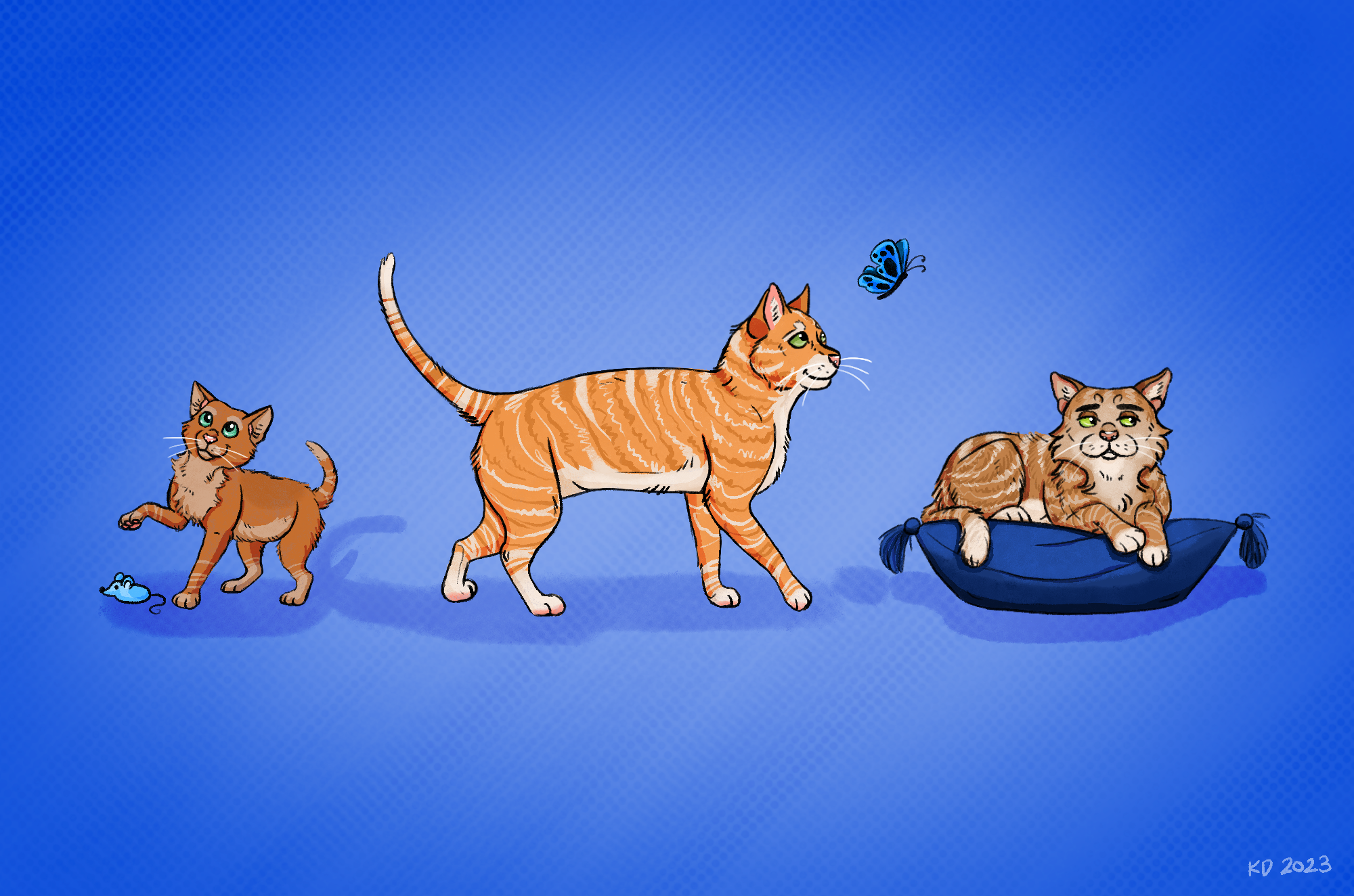Caring for an Aging Cat – What to Look For
If you’ve cared for a cat from kittenhood to their senior years, you know just how much variety in behaviour there can be over the years. Kittens are generally more interested in exploring their world than sitting on laps for long naps. Middle-aged cats can be both inquisitive and affectionate, and in their later years, cats tend to slow down and spend more time with their owners/sleep more often.
Aging cats make great pets as they are less likely to tear apart your furniture or go to the bathroom in a hidden spot. They’re also more likely to want to sit on your lap, or lay down next to you on the couch, and bask in the presence of their favourite person! When cats get older, they slow down, just like we do, and in many cases, there are some reasons for it. That isn’t to say we should let these changes slide. It’s always important to keep a close eye on your cat’s behaviour and to bring it in for a checkup when things change.
Health Risks
As we all age, we accept some changes happen within our bodies that sometimes increase our health risks. Aging cats are no different. Over time, they become more prone to certain things, including, but not limited to:
Arthritis
Dementia
Cancer
Diabetes
Kidney Disease
Liver Disease
An important thing for cat owners to remember is to not write off changes in their cats as inevitable parts of aging. In many cases, symptoms of health issues can be treated, either healing the cat completely, or at least improving their quality of life.
Many subtle symptoms are frequently written off as parts of aging, and these include, but are not limited to:
Stiffness walking or standing
Loss of confidence
Changes in weight/body shape
Changes in energy levels
Changes in appetite
Noticeably drinking more water
Changes in litter box habits
Lumps, bumps, or swelling
Unusual discharge from the eyes, nose, or rear end
Confusion
Barking or meowing at night
Changes to eye appearance
It goes without saying, if your feline friend is showing any of these symptoms and they have not yet been to a veterinarian, we suggest you book an appointment as soon as possible. As far as prevention goes, when taking care of an aging cat, a trip to the vet every six months is important, regardless of their health. Some cats are good at hiding health problems and only an experienced veterinarian would know what to look for.
The Brighter Side
Despite the health risks older cats face, one universal truth is that many older pets tend to live very healthy, regular lives. Cats can live a very long time, especially if they have strong genes. While the average cat often lives between 12-18 years, many live past 20 and beyond.
Cats are clean, careful creatures, and while they’re also curious, they usually do a good job of staying safe. While we cannot control everything that happens to our cats, if we keep them indoors, we can greatly improve their chances of living a long, healthy life.
Once a cat reaches its later years, it’s up to their owners to keep an eye out for changes in behaviour or appearance, and to take them for regular visits to the vet! This is the best way to keep them purring and napping for as long as possible and to ensure they live as happily and comfortably as possible.

